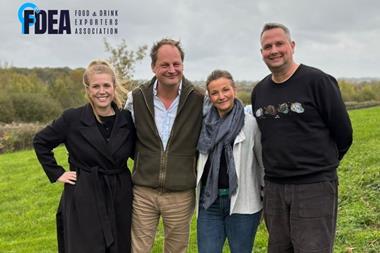Battening down the hatches by reducing marketing spend may not be the best way to cut losses. The key is to get your message right
T he latest quarterly diagnosis of marketing department budgets reveals that 19% of companies reported cuts in marketing spend and a net decrease of 6.5% in traditional media advertising, with fmcg among the most frugal sectors.
The Bellwether Report, published by the Institute of Practitioners in Advertising earlier this month, makes it clear that current market uncertainty has begun to impact on businesses' willingness to spend on what many still see as an 'added extra'.
Plummeting consumer confidence, the increasing cost of petrol and rising mortgage rates have meant that consumers are seeing a larger proportion of their after-tax earnings disappearing each month. And with less spare cash in the customer's pocket, certain retail and manufacturing companies have decided that battening down the hatches by cutting back on marketing is the way to reduce further losses.
But the key to increasing profits and getting consumers buying is not to skimp on marketing. It is a common misconception that businesses cannot gain market share in times of recession. The key is to get your customer offer right and communicate it through the most relevant channels.
Indeed, over the past 12 months, savvy retailers have begun to realise that instead of going back to traditional media time and again, the future lies in other areas. Successful social media, online advertising and experiential campaigns have proved that non-
traditional media can have a real effect on boosting the bottom line.
Take Premier Foods, which launched its Branston baked beans last year with a weighty sampling and experiential campaign. Featuring a £2m blind taste test, backed by a £7m series of TV ads, the campaign saw Branston take a 10% share of the £250m UK baked beans market in just three months.
Look, also, at Greggs. At the end of 2006, few would have predicted that, at the same time the following year, the company would be boasting a 5.8% increase in half-year sales. The baker seems to be laughing in the face of ballooning wheat and dairy prices.
So how did they do it? With clever, targeted marketing, that's how. Greggs brought in the suitably no-nonsense comedian, Paddy McGuinness, to be the face of the brand and has made excellent use of viral advertising. The 12 Facebook 'Greggs Appreciation Societies' (with 1,292 members) are raving about the latest ads, which have been uploaded on YouTube. Buy-one-get-one-free' vouchers on the company website have also been hugely successful, with 8,000 downloaded in the first 48 hours of the promotion.
The fact is that brands need advocates people can trust - and the most powerful advocate is a real consumer. That's why web 2.0 applications are so useful - everyone can express their views, and these can help turn a good business into a great one.
Getting it right is not rocket science. It takes a strong marketing team with a careful strategy and a firm grasp of your brand and customer base to get consumers where you want them: spending money at the tills.
Ultimately, any marketing strategy worth its salt should more than pay for itself in terms of sales, market share and brand recognition. As we move into 2008, it is not those who plan to slash their marketing budgets that will bear the brunt of any further economic downturn. Rather, the victims will be those who do not work every penny of that budget effectively.n
Abby Wright, director at Vertigo PR, the brand division of MC2


















No comments yet